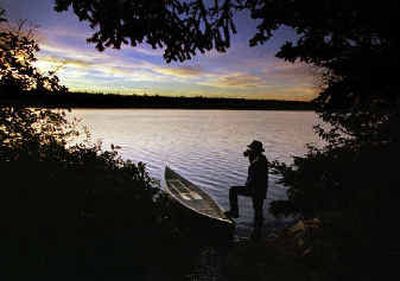Paddlers rule in wild waters

Wet landscapes and wilderness management rules have maintained paddling as the premier mode of transportation in several of the nation’s wilderness areas outside of the Boundary Waters Canoe Area.
The Okefenokee Wilderness is 396,000 acres of swamp-paddling paradise in the core of the 438,000-acre Okefenokee National Wildlife Refuge of Georgia.
Visitors heading into the wilderness travel by canoe or kayak into the unaltered world of alligators and a spectacle of bird species that flourish in the mix of cypress forests, peat bogs and wet prairies.
More than 15 designated paddling routes allow travelers to paddle, pole and push their vessels in various habitats as they explore the wilderness and origin of the Suwanee River. Wildlife attractions include herons, egrets, ibis, cranes and bitterns, the endangered red-cockaded woodpecker and wood stork and otters (when the alligators are sleeping).
Overnight camping is allowed in designated campsites, which usually are on wooden platforms built on pilings above the swamp.
The Allagash Wilderness Waterway in Maine is not part of the federal Wilderness Preservation System, but rather a state park backcountry area managed since 1966 with a variety of options that cater to tradition and progress.
While powerboats including jet-skis are allowed in the periphery of the 92-miles of lakes, ponds and streams, the canoe is the only vessel allowed on the waterway’s core. Outboard motors of less than 10 horsepower can be used even in the core, but only on canoes!
Similar to federal wilderness areas, no chain saws or other motorized equipment is allowed in the core of the waterway and party size is strictly limited. However, during winter, snowmobiles and even ATVs are allowed in much, but not all, of the protected area.